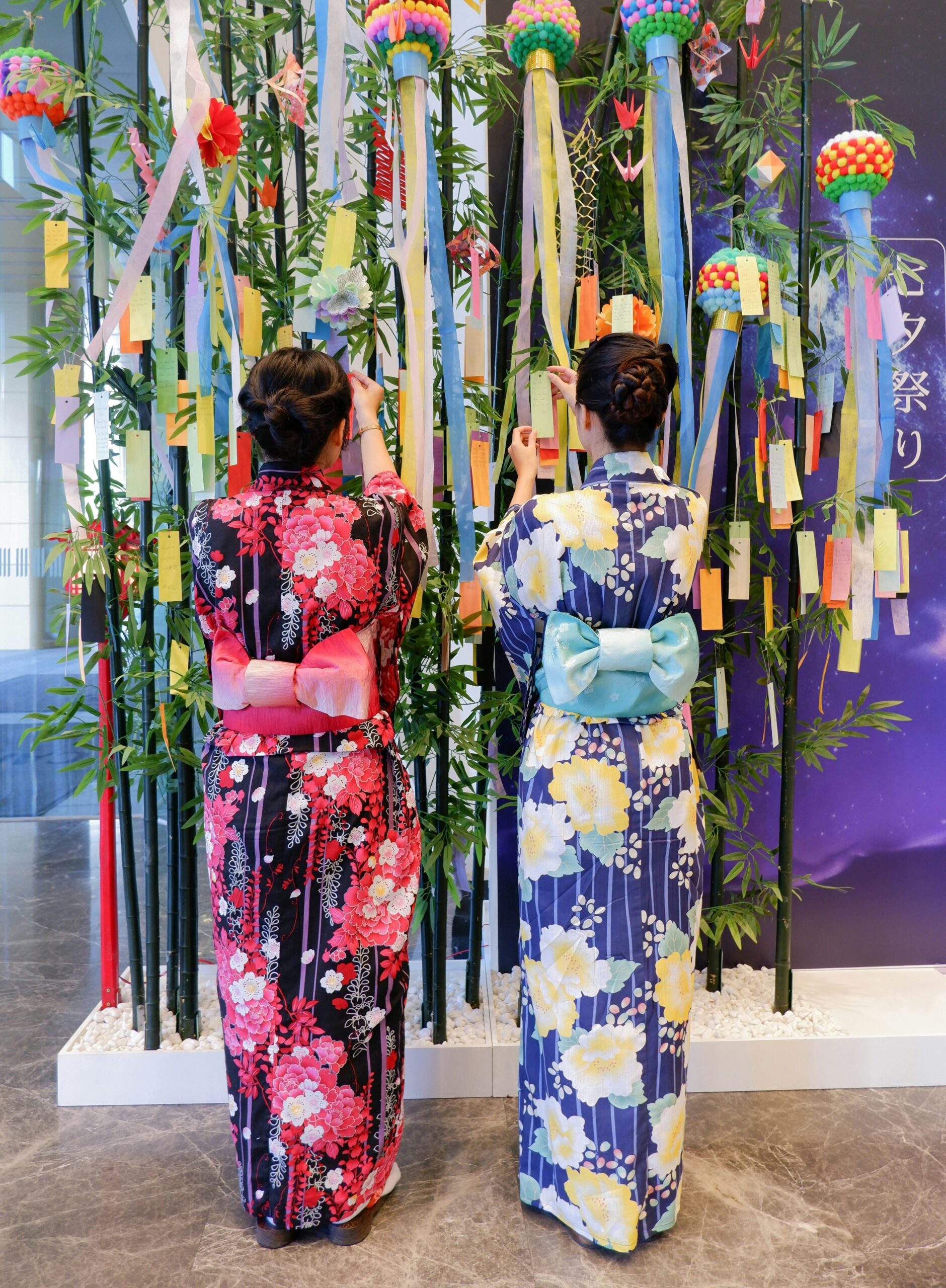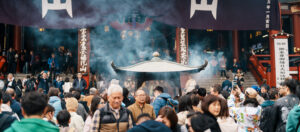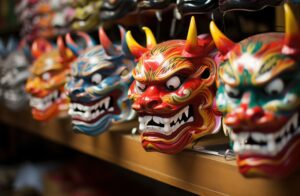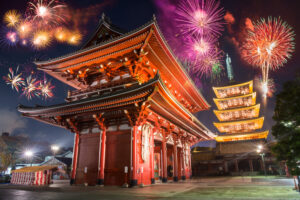In the heart of summer, under a canopy of stars, Japan celebrates one of its most poetic and romantic festivals: Tanabata. Known as the Star Festival, this annual event intertwines celestial legends with cultural traditions, crafting an enchanting narrative of love, hope, and reunion. From the bustling streets of Tokyo to the serene settings of Sendai, Tanabata transforms the nation with vibrant decorations, heartfelt wishes, and a myriad of festivities. As we unravel the tapestry of this beloved festival, we journey through its origins, traditions, and modern-day interpretations, exploring how Tanabata continues to captivate hearts and imaginations across Japan and beyond.
Tanabata: Unveiling the Star Festival’s Origins
Tanabata, or the Star Festival, traces its origins back to a Chinese legend, which was later adopted and infused with unique Japanese cultural elements. The festival commemorates the celestial love story between Orihime (Vega) and Hikoboshi (Altair), whose once-a-year meeting is celebrated every seventh day of the seventh lunar month. This day, when these star-crossed lovers are said to reunite, has been marked by festivities since the Nara period, showcasing the enduring appeal of this celestial tale. The introduction of Tanabata to Japan is attributed to Empress Kōken in the 8th century, who celebrated the first known Tanabata ceremony in the imperial court, blending it with traditional Japanese customs over time.
Vega and Altair: A Celestial Love Story
At the heart of Tanabata lies a poignant love story between Vega, a weaving princess, and Altair, a humble cowherder. Legend has it that their deep love led them to neglect their celestial duties, prompting the gods to separate them across the Milky Way. Allowed to meet just once a year, their annual reunion on the seventh day of the seventh month is heralded with joy and celebration. The Milky Way, acting as a river separating the lovers, becomes a bridge of magpies on this special night, allowing them to share a fleeting moment together. This celestial narrative not only enriches the festival’s romantic allure but also underscores themes of love, separation, and reunion that resonate universally.
July 7th: The Annual Reunion of Star-Crossed Lovers
Though traditionally observed according to the lunar calendar, modern Tanabata festivities are most commonly held on July 7th. This date aligns with the Gregorian calendar, making the celebration more accessible and consistent across Japan. In some regions, however, Tanabata is celebrated in August to stay true to its original lunar calendar timing, adding a unique local flavor to the festivities. The annual reunion of Orihime and Hikoboshi is manifested in various customs and events, including parades, traditional music, and dance performances, all set against a backdrop of celestial decorations and themes.
Navigating Tanabata’s Historical Roots and Significance
Tanabata’s historical roots highlight its significance as a fusion of various cultural elements. Initially inspired by the Chinese Qixi Festival, Tanabata evolved to incorporate Japanese sensibilities and traditions, reflecting the country’s adeptness at blending external influences with its unique heritage. Over the centuries, Tanabata has transcended its mythological origins to become a celebration of human emotions, aspirations, and communal bonds. It serves as a vivid reminder of Japan’s rich cultural tapestry, emphasizing the importance of storytelling, seasonal change, and the human connection to the natural and celestial worlds.
The Bamboo Wishes: Tanabata’s Heartfelt Tradition
One of Tanabata’s most enduring traditions is the writing of wishes on tanzaku, small pieces of paper, which are then tied to bamboo branches. This practice symbolizes the sending of personal hopes and dreams to the heavens, mirroring Orihime’s and Hikoboshi’s longing for each other. The bamboo, often set afloat on rivers or burned after the festival, serves as a messenger between the earth and the celestial sphere. This custom not only adds a deeply personal dimension to Tanabata but also fosters a sense of community as people gather to read and share their wishes, creating a collective tapestry of human aspirations.
From Sendai to Tokyo: Celebrating Tanabata Nationwide
Tanabata is celebrated with great enthusiasm across Japan, with each region adding its unique touch to the festivities. The Sendai Tanabata Festival, held in August, is one of the largest and most famous, attracting visitors with its elaborate decorations and vibrant atmosphere. Meanwhile, in Tokyo, the Asagaya Tanabata Festival is known for its colorful paper mâché sculptures and lively street performances. From the northern reaches of Hokkaido to the southern islands of Okinawa, Tanabata brings communities together, showcasing the diversity of Japan’s cultural landscape and the unifying power of tradition.
The Colors of Tanabata: Understanding the Festival’s Aesthetics
The visual spectacle of Tanabata is defined by its vibrant colors and intricate decorations, each carrying symbolic meaning. The streets are adorned with streamers, ornaments, and bamboo shoots, creating a kaleidoscope of colors that enliven the festivities. The seven types of decorations traditionally used in Tanabata, including tanzaku (wish papers), kimonos, and purses, represent various hopes for the future, such as longevity, learning, and prosperity. These decorations not only add to the festival’s aesthetic appeal but also convey deeper cultural values and aspirations, weaving a rich visual and symbolic tapestry that defines Tanabata’s celebratory atmosphere.
Tanabata Matsuri: A Guide to Japan’s Summer Festivities
For those looking to experience Tanabata in Japan, the festival offers a plethora of activities and sights. From the momentous fireworks displays that light up the night sky to the lively street markets offering traditional foods and goods, Tanabata Matsuri is a celebration of cultural heritage and summer joy. Attendees can immerse themselves in traditional dances, music performances, and even participate in making their own tanzaku wishes. Each region’s distinct celebration provides a unique window into local traditions and customs, making Tanabata an ideal time for cultural exploration and appreciation.
The Weave of Tradition: Tanabata’s Cultural Impact
Tanabata’s impact on Japanese culture extends beyond its historical and mythological roots, influencing various aspects of art, literature, and popular media. The festival’s themes of love, longing, and reconciliation have inspired countless works, from classical poetry to contemporary films and anime. Tanabata symbolizes the interplay between human emotions and the natural world, a theme that resonates deeply within Japanese aesthetics and philosophy. As such, the festival not only celebrates a celestial legend but also reflects broader cultural values and artistic sensibilities, showcasing the enduring relevance of traditional narratives in modern society.
Starlit Delicacies: The Culinary Side of Tanabata
The celebration of Tanabata is not complete without its array of seasonal delicacies. Traditional foods such as somen (cold noodles) symbolize the Milky Way, while colorful jelly and sweets represent the vibrant decorations of the festival. Street stalls and markets become bustling centers of culinary exploration, offering a taste of both regional and festival-specific treats. These culinary traditions not only enhance the festive atmosphere but also provide a flavorful journey through Japan’s rich gastronomic landscape, inviting participants to savor the tastes of summer and celebration.
Beyond the Stars: Modern Interpretations of Tanabata
In contemporary Japan, Tanabata continues to evolve, embracing new interpretations and expressions while retaining its core themes and traditions. Modern technology and social media have introduced innovative ways to celebrate the festival, from virtual reality experiences that simulate the celestial reunion to digital platforms where people can share their tanzaku wishes with the world. These modern adaptations ensure that Tanabata remains a relevant and cherished celebration, bridging the gap between tradition and contemporary life, and allowing new generations to connect with this timeless festival in meaningful ways.
Tanabata Across Borders: The Festival’s Global Journey
As Japanese culture continues to captivate audiences worldwide, Tanabata has embarked on a global journey, celebrated in cities across the globe. From community festivals in Brazil to cultural events in the United States, Tanabata has found a home beyond Japan’s borders, fostering cross-cultural exchange and understanding. These international celebrations highlight the universal themes of love, hope, and connection that Tanabata embodies, demonstrating the festival’s ability to transcend cultural and geographical boundaries and unite people under the shared sky of humanity’s aspirations.
Tanabata, with its rich tapestry of celestial legends, cultural traditions, and communal festivities, remains one of Japan’s most beloved summer festivals. As it continues to inspire and evolve, both within Japan and beyond its shores, Tanabata stands as a testament to the enduring allure of storytelling, the beauty of seasonal change, and the universal longing for connection and reunion. Whether through the intimate act of writing a wish on a tanzaku or the collective experience of gazing up at the starlit sky, Tanabata invites us all to pause, reflect, and find joy in the simple yet profound moments of human connection. As the festival lights up the summer sky, it weaves together the dreams and aspirations of all who gather under its celestial canopy, reminding us that, no matter where we are in the world, we share the same stars, the same hopes, and the same boundless sky.








